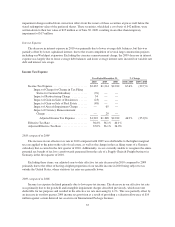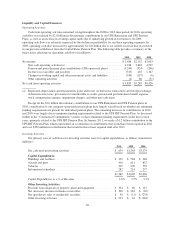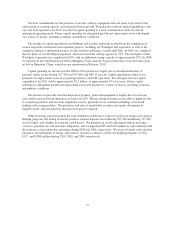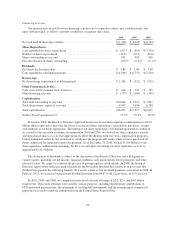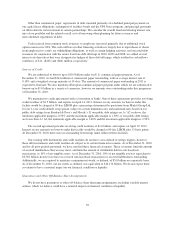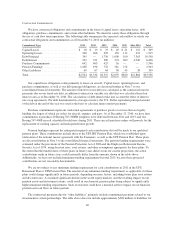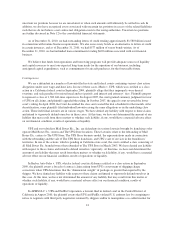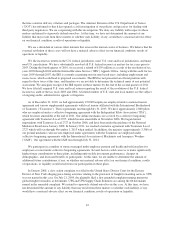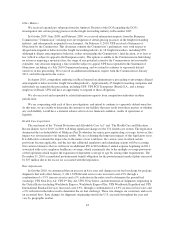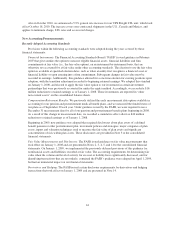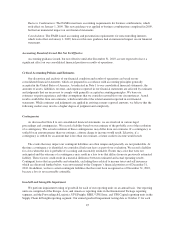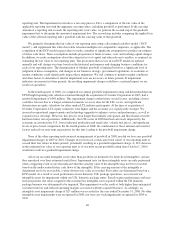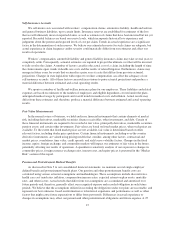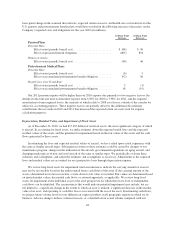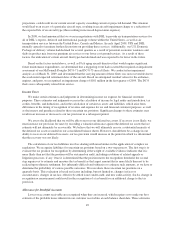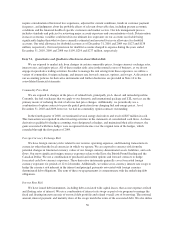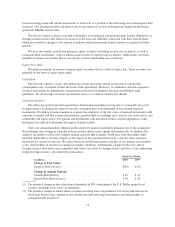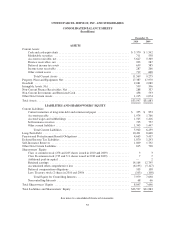UPS 2010 Annual Report Download - page 57
Download and view the complete annual report
Please find page 57 of the 2010 UPS annual report below. You can navigate through the pages in the report by either clicking on the pages listed below, or by using the keyword search tool below to find specific information within the annual report.Business Combinations: The FASB issued new accounting requirements for business combinations, which
took effect on January 1, 2009. This new guidance was applied to business combinations completed in 2009,
but had an immaterial impact on our financial statements.
Consolidation: The FASB issued accounting and presentation requirements for noncontrolling interests,
which took effect on January 1, 2009, however this new guidance had an immaterial impact on our financial
statements.
Accounting Standards Issued But Not Yet Effective
Accounting guidance issued, but not effective until after December 31, 2010, are not expected to have a
significant effect on our consolidated financial position or results of operations.
Critical Accounting Policies and Estimates
Our discussion and analysis of our financial condition and results of operations are based on our
consolidated financial statements, which are prepared in accordance with accounting principles generally
accepted in the United States of America. As indicated in Note 1 to our consolidated financial statements, the
amounts of assets, liabilities, revenue, and expenses reported in our financial statements are affected by estimates
and judgments that are necessary to comply with generally accepted accounting principles. We base our
estimates on prior experience and other assumptions that we consider reasonable to our circumstances. Actual
results could differ from our estimates, which would affect the related amounts reported in our financial
statements. While estimates and judgments are applied in arriving at many reported amounts, we believe that the
following matters may involve a higher degree of judgment and complexity.
Contingencies
As discussed in Note 8 to our consolidated financial statements, we are involved in various legal
proceedings and contingencies. We record a liability based on our estimate of the probable cost of the resolution
of a contingency. The actual resolution of these contingencies may differ from our estimates. If a contingency is
settled for an amount greater than our estimate, a future charge to income would result. Likewise, if a
contingency is settled for an amount that is less than our estimate, a future credit to income would result.
The events that may impact our contingent liabilities are often unique and generally are not predictable. At
the time a contingency is identified, we consider all relevant facts as part of our evaluation. We record a liability
for a loss when the loss is probable of occurring and reasonably estimable. Events may arise that were not
anticipated and the outcome of a contingency may result in a loss to us that differs from our previously estimated
liability. These factors could result in a material difference between estimated and actual operating results.
Contingent losses that are probable and estimable, excluding those related to income taxes and self insurance
which are discussed further below, were not material to the Company’s financial position as of December 31,
2010. In addition, we have certain contingent liabilities that have not been recognized as of December 31, 2010,
because a loss is not reasonably estimable.
Goodwill and Intangible Impairment
We perform impairment testing of goodwill for each of our reporting units on an annual basis. Our reporting
units are comprised of the Europe, Asia, and Americas reporting units in the International Package reporting
segment, and the Forwarding & Logistics, UPS Freight, MBE / UPS Store, and UPS Capital reporting units in the
Supply Chain & Freight reporting segment. Our annual goodwill impairment testing date is October 1st for each
45


